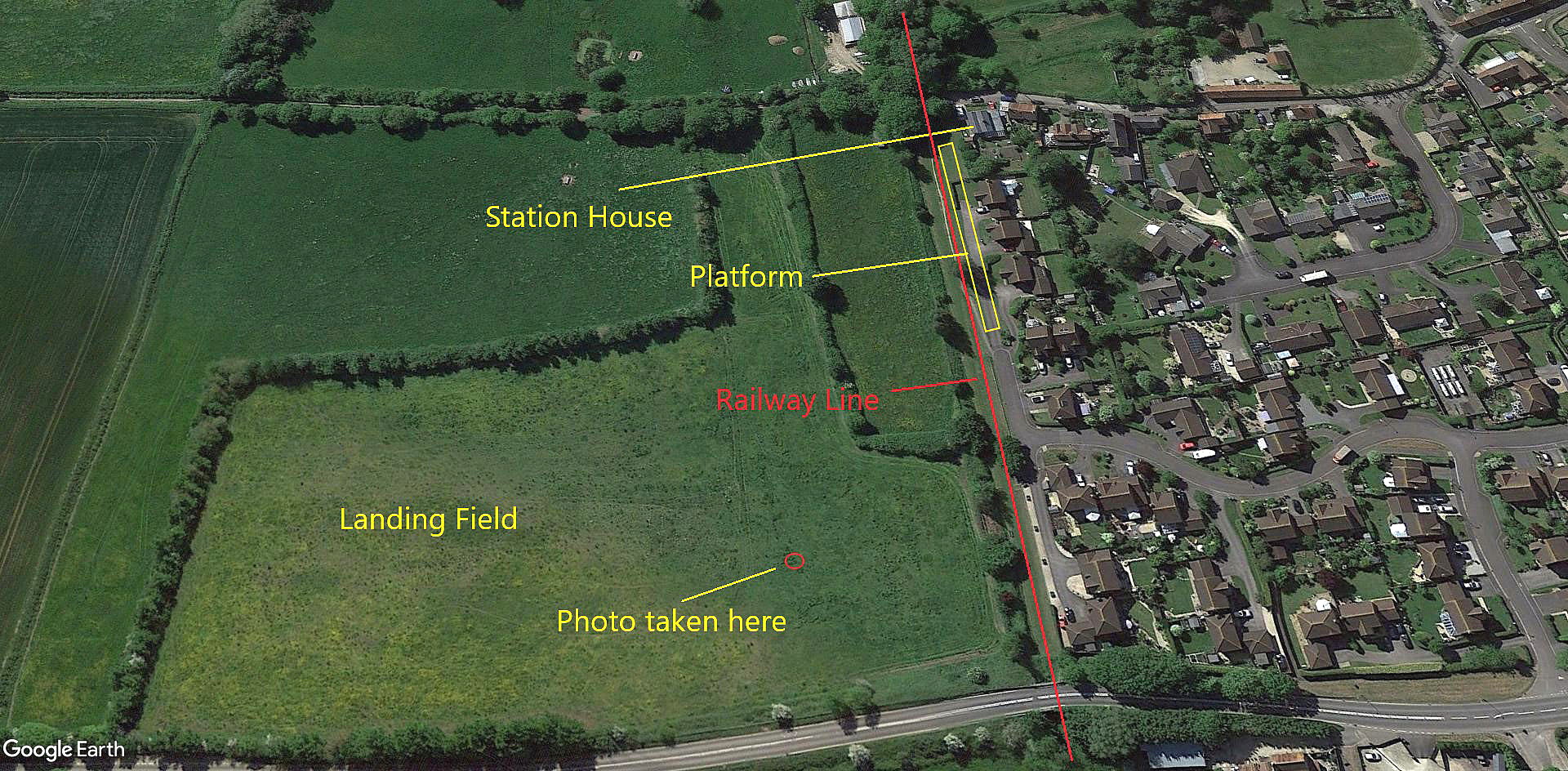Henstridge station
Note: This map gives the location of Henstridge within the UK.
HENSTRIDGE STATION: Temporary landing site
Note: These two maps and Google Earth © picture were kindly provided by Mr Michael T Holder
Note: The first two illustrations were provided by Mr Michael T Holder. I added the area view obtained from Google Earth ©
NOTES: According to C C Turner in his book Old Flying Days published in or about 1927 I discovered this account: “ Mr. Graham Gilmour early in 1911 was touring on his Bristol military biplane. (Almost certainly a Bristol Boxkite I’d say?). On April 12, with Mr. Gordon England as passenger, he set out from AMESBURY for Yeovil. (My capitals throughout). He lost his way, however, and descended at FRYERN COURT, HAMPSHIRE). Reascending, he flew to BLANDFORD (DORSET) to a friend’s place at EASTBURY PARK. In the evening he headed for Martock, but the wind was so strong that he was practically blown down at HENSTRIDGE station, where the airmen rested for the night."
Note: Mike Holder managed to find this picture of Gilmour's aeroplane, published in the Western Gazette on Friday 21st April 1911.
"Continuing in the morning, they flew to MARTOCK, (SOMERSET), via Sherborne, (it is not clear if they landed at Sherborne – my note), where they made some passenger flights, winding up by a sharp descent on a lawn, which involved a fence in ruin but left the aeroplane practically undamaged."
A MORE MODERN APPRAISAL
I have to thank Mike Holder, a great friend of this 'Guide' for doing most of the research about these series of flights. Mr Gilmour with Mr England, it now appears acting as engineer, having then recently obtaining his pilots license - so hardly a "passenger" - set off from the British and Colonial Company's Flying School at LARK HILL - which is east of Amesbury.
All the stopping points will be listed in this 'Guide' and route map is provided above.
SOMETHING TO CONSIDER
In those days the 'Art', let alone the science of aerial navigation was pretty much non-existent and pilots frequently became lost within a few miles of taking off. The account by C C Turner of this flight amply demonstrates this, as Mr Gilmour zig-zagged his way across what was, in a straight line, not much more than forty miles.
But, it appears that Gilmour had no intention of flying the route in a straight line. Instead planning to visit at least two friends along the way, at EASTBURY HOUSE and BOWER HINTON. Without too much doubt he had probably thought he could accomplish the whole escapade in one day, which on the face of it seems entirely reasonable. As any private pilot who has ventured well away from the local area can testify, as often as not things do not work out as planned. Indeed, I invariably sought diversion airfields on any planned adventure, and quite often these were needed.
Regarding this project by Gilmour, this is a classic example. Winds are normally supposed to die down in the evening, and generally they do. But not always! As he found out. What we need to remember is that the Bristol 'Boxkite' had, it seems, a maximum straight and level speed of 40 mph. No doubt reduced by having Mr England on board, adding considerable drag as they both sat out between the wings without any streamlining protection such as a nacelle. Therefore, even a brisk breeze could provide elements of gusts and wind-shear causing the machine, (as aeroplanes were invariably called in those days), to stall.
Also, with just 50hp at best, available from the engine, and a propeller which was hardly of a refined design to best exploit the limited power on tap, this probably explains why, having rested overnight in a local hotel, Gilmour decided to take-off the following at 06.00 alone. Flying a few miles west to TOOMER FARM to collect Mr Gordon England.
We'd love to hear from you, so please scroll down to leave a comment!
Leave a comment ...
Copyright (c) UK Airfield Guide






















